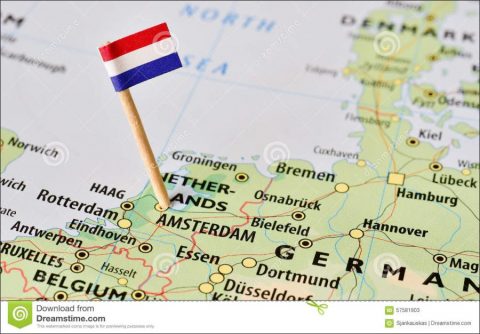Migration has become one of the great challenges worldwide. This is due to the increasing numbers of migrants in all parts in the world, though migration is by no means a new phenomenon. Nevertheless, Castles and Miller (1993) call this era the ‘age of migration’. The challenges posed by migration affect many fields, from politics to education, with different answers found in different countries and under different circumstances.
It will be stressed that integration is one of the key words in the political as well as in the educational discourse in most countries of immigration. Yet, even if integration is a common response in most European and classical countries of immigration, its meaning can still differ since this common approach does not neglect the fact that there are also differences between these countries due to their varying national and cultural developments. There have been periods in world history as well as in European history where mass emigration was part of daily life – generally amongst the poorest social classes of a country. In Europe, the Irish emigration during the great famine is an example as well as emigration from Germany during and after the Industrial Revolution in the nineteenth century.
In European history, there has, however, not only been work migration or migration due to poor economic conditions, but also migration due to political or religious persecution, e.g. the emigration of the Huguenots from France into Prussia. This example also illuminates the pull-and-push effects of migration, since Prussia was very much interested in the migrants because of their craftsmanship. We also find examples of work and settler immigration that were welcomed by the countries of immigration, such as migration into Russia at the time of Empress Catherine the Great. Here, the pull effect is stronger than the push effect. While migration is no new theme to mankind, neither worldwide nor in Europe, we find new developments in the ways in which migration challenges societies today. Migration has become part of the daily life of many, if not most people in Europe since migrants are present in most neighbourhoods or work places.
Migrants and their families have also become a topic in the media – though often with negative connotations. This contributes to the fact that most people are aware of migration, migrants, and especially of the changes in their societies due to migration. These changes are experienced in different – positive and negative – ways. While the richer variety of cuisine is generally well accepted, a shortage in housing, which is thought to be a result of migration, is not. Migration has also become an option for more people in European countries and this holds true especially for the middle classes. This kind of migration is often due to studies or work in another country for a limited time and is therefore not always regarded as migration. Thus, emigration is nowadays less reflected on than immigration. Furthermore, immigration is often discussed critically due to its impact on the labour markets, the socio-economic structure and on the educational system of the receiving country.
Although migration is no new phenomenon in Europe, it has challenged European nation states since the post-war period in many aspects despite differences amongst states as to when it took place, the migration groups themselves and the political reactions to it. This is also applicable to a certain extent to the classical countries of immigration, as, for example, when Australia was in urgent need of new immigrants after the Second World War and the experience of being in danger of foreign occupation. Worldwide, countries of development have experienced immigration as well as emigration due to natural catastrophes and wars of different kinds such as civil wars or wars of liberation. The European development is of special interest as these migration processes fall in the time of the growth of European unity.
Nation states throughout the world are trying to determine whether they will perceive themselves as multicultural and allow immigrants to experience multicultural citizenship (Kymlicka 1995) or continue to embrace an assimilationist ideology. In nation states that embrace Kymlicka’s idea of multicultural citizenship, immigrant and minority groups can retain important aspects of their languages and cultures as well as have full citizenship rights. Nation states in various parts of the world have responded to the citizenship and cultural rights of immigrant and minority groups in significantly different ways.
Since the ethnic revitalization movements of the 1960s and 1970s, many of the national leaders and citizens in the United States, Canada and Australia have viewed these nation states as multicultural democracies (Banks and Lynch 1986). An ideal exists within these nation states that minority groups can maintain important elements of their community cultures and become full citizens of the nation state. However, there is a wide gap between the ideals within these nation states and the experiences of ethnic groups. Ethnic minority groups in the United States, Canada and Australia experience discrimination in both the schools and in the wider society.
Other nation states, such as Japan and Germany, have been reluctant to view themselves as multicultural societies. Citizenship has been closely linked to biological heritage and characteristics in these nation states. Although the biological conception of citizenship in both Japan and Germany has eroded within the last decade, it left a tenacious legacy in both nation states.
Since the 1960s and 1970s, the French have dealt with immigrant groups in ways distinct from the immigrant nations of the United States, Canada and Australia. In France the explicit goal is assimilation (now called integration) and inclusion (Castles 2004). Immigrant groups can become full citizens in France but the price is cultural assimilation. Immigrants are required to surrender their languages and cultures in order to become full citizens.
The academic achievement gap between ethnic minority and majority group students is another salient issue. African-Caribbean, Pakistani, and Bangladeshi students in Britain and Turkish students in Germany are not achieving on a level equal to that of the majority groups in their nation states. There is also a significant achievement gap between African-American students and White students in the United States (Banks and Banks 2004). However, the underachievement of minority students is a complex issue worldwide that defies facile solutions and responses.
Throughout his career the anthropologist John U. Ogbu (Gibson and Ogbu 1991) tried to uncover some of the complex issues related to the differential achievement of ethnic minority groups in various nations. He believed that researchers needed to identify the important difference among ethnic minority groups in order to understand why some were highly successful academically and others were not. His classification of ethnic groups into three types (autonomous, immigrant or voluntary, and castelike or involuntary) provides a useful way to conceptualize differences among ethnic groups. However, it can lead to harmful generalizations about the characteristics of specific groups and divert attention from structural factors that cause minority underachievement. The issue of minority underachievement is undertheorized and requires more complex and nuanced explanations and theories than those that currently exist.
Global migration has increased the number of languages within the nation states and schools in Europe as it has within the United States, Canada, Australia and Japan. One of the most significant issues discussed in this book is the increasing language diversity in European nation states and how schools in various nations are responding to it. Constructing a thoughtful and equitable national language policy related to the languages of immigrant and ethnic groups is a complex and divisive issue in European nation states as it is in other nations throughout the world.



